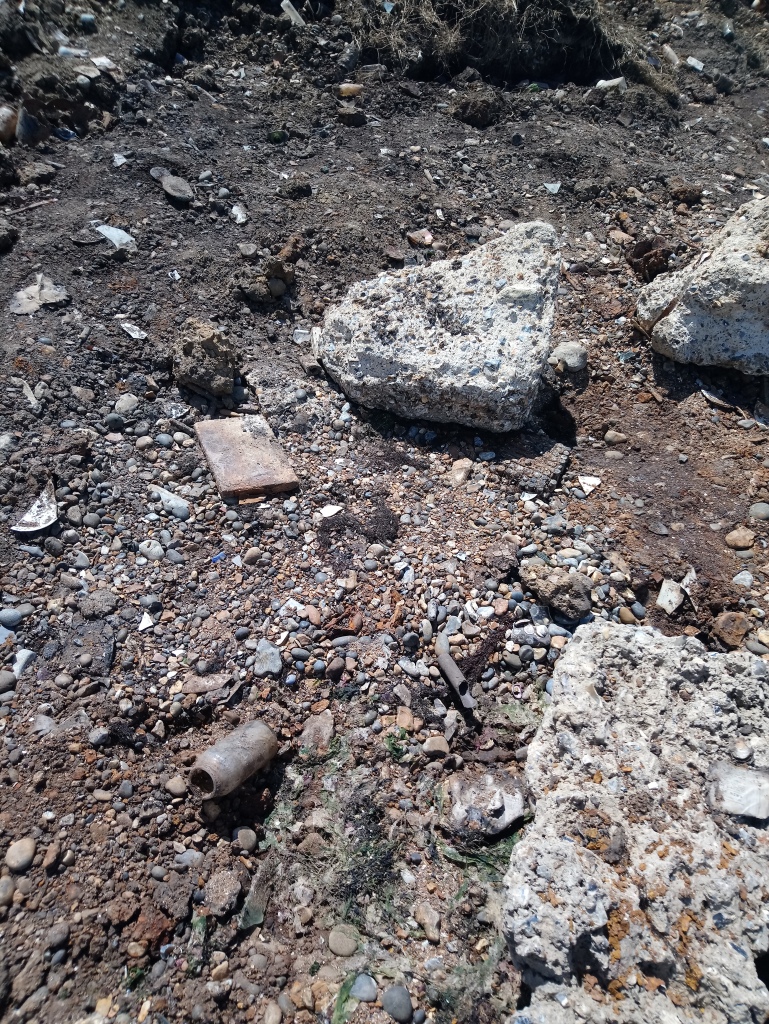Ever wondered what’s happening in the sky above a chance tune in. An aural exploration of sea and air pollution with artists Magz Hall and Peter Coyte at the Whitstable Biennale, Studio 3 Horsebridge Arts Center. Sat 11th and 18th 12.30 -5 and Sunday 19th 11.30-4pm
Whitstable and south east beaches are suffering from sea pollution due to untreated waste water being leaked into the sea by Southern water much to my and other sea swimmers dismay. Read about the local campaign here https://www.facebook.com/SOSWhitstable
Untreated sewage may contain: water; nutrients (nitrogen and phosphorus); solids (including organic matter); pathogens (including bacteria, viruses and protozoa); helminthes (intestinal worms and worm-like parasites); oils and greases; runoff from streets, Cars and roofs; heavy metals (including mercury, cadmium, lead, chromium, copper) toxic chemicals including PCBs, PAHs, dioxins, furans, pesticides, phenols and chlorinated organics.
“Without suitable treatment, waste water we produce every day would damage the water environment and create public health problems. Untreated sewage contains organic matter (carbohydrates, fats, proteins), bacteria and chemicals. Bacteria naturally present in environmental waters do break these substances down, but in doing so they use the oxygen dissolved in the water. If there were large or continuous untreated discharges of urban waste water the result could be too little oxygen for fish and other aquatic life to survive. So the purpose of waste water treatment is to remove organic substances to protect the environment.”DEFRA 2002
Recent tests have shown harmful pollution in the sea here. https://www.kentonline.co.uk/whitstable/news/residents-fears-as-tests-uncover-harmful-pollution-263845/
The Thames Estuary is suffering from sea pollution and is under flight paths of four major London airports. The air across Canterbury is also being polluted by landfill emissions, air and sea pollution are directly effecting quality of life. https://www.kentonline.co.uk/canterbury/news/rancid-egg-smell-forcing-residents-to-keep-windows-shut-26477
I am using the Biennale to kick start a new work in progress and start a conversation and collaboration.
A walk to get sounds, hoping to find the sewage pipe revealved a 70 year old fly tip next to the sea at Tankerton near where the sewage is piped into the sea. Old bottles and news paper from the 1930’s were found there, sea eroision has brought them to the surface on the shoreline. There is also a history of putting landfill next to the sea in the UK.










On Oct 1st I will be taking a sound walk around the country lanes around land fill site as part of the New Radiophonic day at Gulbenkian in Canterbury, details to follow.
Some research on the history of avation scanning for Skyport an installation I made for an exhibition called Learning from Heathrow.

You must be logged in to post a comment.